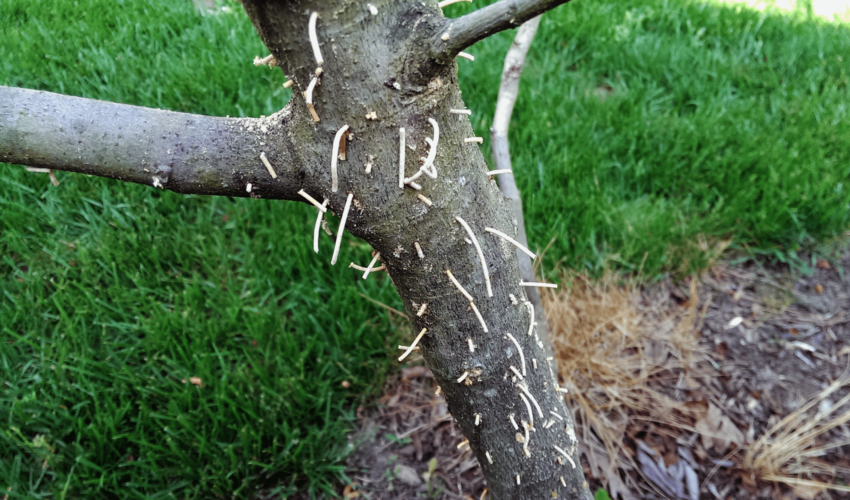
Ambrosia Beetle Prevention

(Photo from Gardening Know How)
Have you ever had a fruit tree just die? It can leave you scratching your head, wondering what went wrong. Did you happen to notice worm-like sawdust protruding from the trunk of the tree? The culprit may be the ambrosia beetle. Read on to learn more about ambrosia beetle prevention.
Ambrosia Beetles
Ambrosia beetles are native to Asia but have unfortunately made their way to the United States. The female beetles burrow into tree trunks of fruit trees and lay their eggs. She creates a tunnel in the tree, which is why you may see worm-like sawdust coming out of the trunk. While the tunnels are not good for the tree, the fungus that is carried by the ambrosia beetle is what kills the tree.
Other Signs of Ambrosia Beetles and Fungus
While the tunneling and toothpick-like protrusions from the trunk is a dead giveaway of ambrosia beetle activity, there are some other signs for which to be on the lookout! Once the beetle has infested a tree and the fungus has made a home, you will begin to notice parts of the tree turning dark brown or black as they die. At this point, it is unlikely that the tree will survive.
Ambrosia Beetle Prevention
Once the ambrosia beetle is inside the tree, there is no way to kill the insect or the eggs. The same is true of the fungus that hitchhikes on the beetle. The best way to stop an ambrosia beetle infestation is to keep trees healthy and stress-free and to pretreat with pyrethroids.
Believe it or not, ambrosia beetles are attracted to unhealthy trees or trees that are stressed. Stressed trees release pheromones that attract the beetle. The beetles may find damaged or diseased bark to bore into and the rest is history.
Applying pyrethroids helps prevent these beetles from boring into the tree. While it is not 100% beetle-proof, it is a good start. Remember, an ounce of prevention is worth a pound of cure.
For more updates, visit our Facebook page.
Click here to view our events page!
